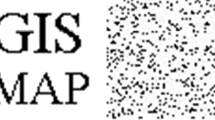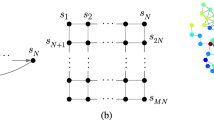Abstract
In order to improve the security and robustness of the 3D model information hiding algorithm, this paper proposes a point cloud model information hiding algorithm based on multi-scale transformation and composite operator. Firstly, rasterizing the 3D point cloud model, and use the improved 3D Harris algorithm to extract the corner points of the rasterized model. Secondly, using SURF operator to screen robust feature points as embedding regions of secret information. Finally, the feature region is subjected to the multiscale transformation, and the secret information is hid by using a quantization-based method to embed it into the low-frequency coefficient matrix. The experimental results show that the algorithm can completely avoid affine transformation attacks and can achieve a Corr value of 0.729 in the face of a composite attack with 10% simplification, 0.5% noise and 10% shear. The algorithm’s invisibility, capacity, and its robustness against multiple attacks are improved.
This work has been supported by the National Natural Science Foundation of China (No. 62372062), and the Fundamental Research Funds for the Central Universities, CHD (No. 300102240208).
Access this chapter
Tax calculation will be finalised at checkout
Purchases are for personal use only
Similar content being viewed by others
References
Ohbuchi, R., Masuda, H., Aono, M.: Watermarking three-dimensional polygonal models. In: Proceedings of the fifth ACM International Conference on Multimedia (1997)
Ohbuchi, R., Masuda, H., Aono, M.: Watermarking three-dimensional polygonal models through geometric and topological modifications. IEEE J. Select. Areas Commun. 551–560 (1998)
Hamidi, M., Chetouani, A., El Haziti, M., El Hassouni, M., Cherifi, H.: Blind robust 3D mesh watermarking based on mesh saliency and wavelet transform for copyright protection. Information 10(2), 67 (2019)
Nam, S.H., et al.: NSCT-based robust and perceptual watermarking for DIBR 3D images. IEEE Access. 8, 93760–93781 (2020)
Shuai, R., Huirong, C., Aoxiong, F.: Dual information hiding algorithm based on the regularity of 3D mesh model. Optoelectron. Lett. 18(9), 559–565 (2022)
Boyer, E., et al.: SHREC 2011: robust feature detection and description benchmark. arXiv preprint arXiv:1102.4258 (2011)
Hartkens, T., Rohr, K., Stiehl, H.S.: Evaluation of 3D operators for the detection of anatomical point landmarks in MR and CT images. Comput. Vis. Image Underst. 86(2), 118–136 (2002)
Xi, W., Shi, Z., Li, D.: Comparisons of feature extraction algorithm based on unmanned aerial vehicle image. Open Phys. 15(1), 472–478 (2017)
Kovac̆, I., Marák, P.: Finger vein recognition: utilization of adaptive Gabor filters in the enhancement stage combined with sift/surf-based feature extraction. Signal Image Video Process. 17(3), 635–641 (2023)
Zhang, F., Zhang, C., Yang, H., Zhao, L.: Point cloud denoising with principal component analysis and a novel bilateral filter. Traitement du Signal (2019)
Phan, A.T.T., Huynh, T.N.: Pavement crack extraction method from mobile laser scanning point cloud. In: Advances in Civil Engineering (2022)
Roveri, R., Rahmann, L., Oztireli, C., Gross, M.: A network architecture for point cloud classification via automatic depth images generation. In: Proceedings of the IEEE Conference on Computer Vision and Pattern Recognition (2018)
Liu, G., Wang, Q., Wu, L., Pan, R., Wan, B., Tian, Y.: Zero-watermarking method for resisting rotation attacks in 3D models. Neurocomputing 421, 39–50 (2021)
Author information
Authors and Affiliations
Corresponding author
Editor information
Editors and Affiliations
Rights and permissions
Copyright information
© 2024 ICST Institute for Computer Sciences, Social Informatics and Telecommunications Engineering
About this paper
Cite this paper
Ren, S., Gong, H., Cheng, H., Cheng, Z. (2024). Point Cloud Model Information Hiding Algorithm Based on Multi-scale Transformation and Composite Operator. In: Goel, S., Nunes de Souza, P.R. (eds) Digital Forensics and Cyber Crime. ICDF2C 2023. Lecture Notes of the Institute for Computer Sciences, Social Informatics and Telecommunications Engineering, vol 570. Springer, Cham. https://doi.org/10.1007/978-3-031-56580-9_9
Download citation
DOI: https://doi.org/10.1007/978-3-031-56580-9_9
Published:
Publisher Name: Springer, Cham
Print ISBN: 978-3-031-56579-3
Online ISBN: 978-3-031-56580-9
eBook Packages: Computer ScienceComputer Science (R0)




